Was there an estate in New York ever as beautiful as Morrisania, nearly 2,000 acres that hugged the Harlem River until it opened out into the turbulent East River as it coursed past small islands and flowed into the Long Island Sound?
A property that varied from western hills looking over the river to the rolling spread of Manhattan below, to eastern marshes and flatlands suitable for farming.
Today’s Bronx neighborhood of Morrisania is only a small portion of the original property owned by the Morris family since the 1670s, during the dawning years of British dominance in the New York region.
Vestiges of the old estate still existed well into the 20th century, including their old well (pictured below in 1910)
The original parcel, purchased by Welsh captain Richard Morris, was only 500 acres, a part of original land settled by Bronx namesake Jonas Bronck.
When Richard died, brother Lewis Morris (for reasons that will soon be evident, let’s call him Lewis I) moved from the West Indies to claim the property. He would be one in a succession of Lewis Morrises to live here and place an imprint on what would some day contain much of the South Bronx.
The Morris family was feisty, business savvy, well connected, extremely aristocratic and entirely unoriginal with names. Another Lewis Morris (Richard’s son, or Lewis II) became the governor, at separate times, of both New York and New Jersey. Yet another Lewis (Lewis III) became a powerful New York justice. His son Lewis Morris (Lewis IV) was a signer of the Declaration of Independence.
Below: Morris farm houses, still standing in 1920
If you haven’t gleaned it already, the clan carried themselves like some kind of royal family. They were, artificially at least, as were many families in the New World who quickly made fortunes here and staked claims in manners similar to what their forebears were accustomed to in Europe. Over the decades, the Lewises would blend by marriage into other elite, bold-faced families to form a tangled ball of interlinked faux American royalty.
Morrisania for most of the 18th century resembled a miniature British kingdom, with a spread of small farms, dairies and cattle pens operated by those leasing from the Morris family, a proper workaday serfdom common for the era. However, during the early decades, the land was even worked with slave labor, although the practice was phased out in later generations.
Below: The Lewis G Morris house which stood at Montgomery Avenue and 176th Street at late as 1905 (the date of this image)
When Lewis 3 passed in 1762, this massive property was split in two. West of the small babbling Mill Brook (honored today with a playground and a housing development) belonged to Lewis IV and his brothers, but the more bucolic eastern side fell to Lewis III’s second wife Sarah and eventually her only son. That’s right, Gouverneur Morris (pictured below).
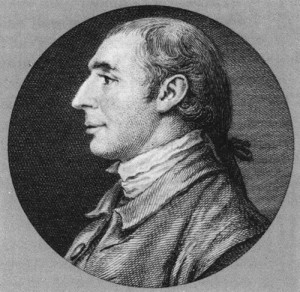
Gouverneur fled his home during the Revolutionary War, but his mother Sarah stayed behind. During this time, the rich farmland was vandalized and the family’s voluminous library, one of the largest collections in North America at the time, was ransacked.
Gouverneur was quite busy in the late 18th century doing things like penning the Constitution and being minister to France in the midst of their bloody revolution. But wherever he traveled, he always felt a closeness to Morrisania.
After the war, while Gouverneur was in France, Lewis Morris (the fourth one, Gouverneur’s half brother) offered up the family estate of Morrisania be used as the site for the new American capital. One can just imagine the history of New York had Congress taken him up on that offer!
The former mansion of Gouverneur Morris which sat near the waterfront in the Bronx until the 1900s.
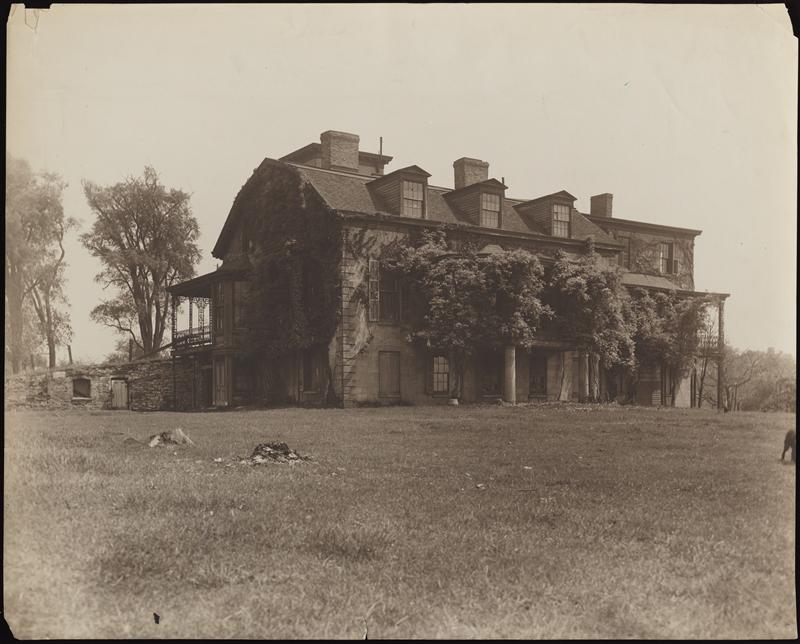
In 1798, when Gouverneur returned from France and claimed the property for himself, he built a new home here (the one pictured above) and filled it with all his gathered French finery. Perhaps no household was more beautiful — or as pretentious — as Morris’ new manor.
Gouverneur, of course, facilitated the growth of New York with his roles in the development of both the Commissioners Plan of 1811 and the Erie Canal. His old farms, however, were technically part of Westchester Country. In the 1840s, his son Gouverneur Morris Jr. emulated New York’s former estate owners and began to develop his property for commercial and residential use.
Below: The village of Morrisania, an original ‘commuter’s town’ for those who worked in the city of New York down south.
Chief among these decisions was becoming vice president of the New York and Harlem Railroad (eventually to be owned by Cornelius Vanderbilt) and allowing the railroad to cut through the old property. Townships formed around the railroad station, include one small village named for the old manor, Morrisania. That village is the root of today’s neighborhood of the same name.
Gouverneur Junior was cut from the visionary mold that would define many in the 19th century. One pet project was the development of a port village along the old family property on the eastern shoreline, today’s Port Morris area.
Port Morris, pictured below in 1920, would become a chief location for manufacturing in the borough.
Given that Gouverneur Senior was partially responsible for Manhattan’s grid, it’s no surprise that a different grid patterns were adhered to the old Morris properties over the years. In emulating Manhattan’s pattern, all traces of the area’s early farm existence was eradicated.
The following years would hold many strange detours in the history of the South Bronx: opulent boulevards, the New York Yankees, 1970s urban decay. But the Morrises live on, if in name only.
However one lasting physical vestige to the Morris family still remains — St. Ann’s Church (pictured below) in the neighborhood of Morrisania, built in 1840 and the location of burials for members of the Morris family, including Gouverneur Morris and Lewis Morris (the fourth).
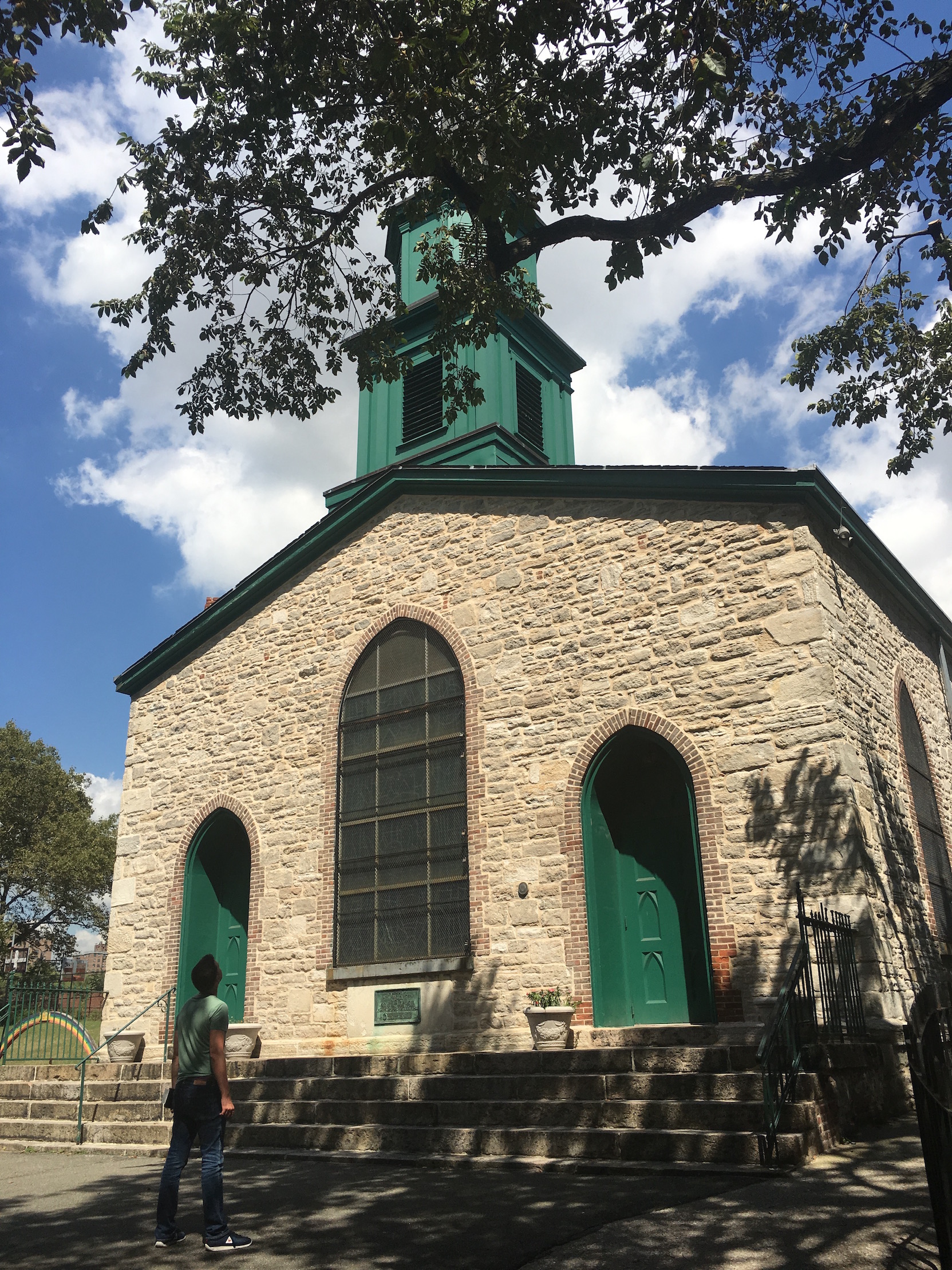
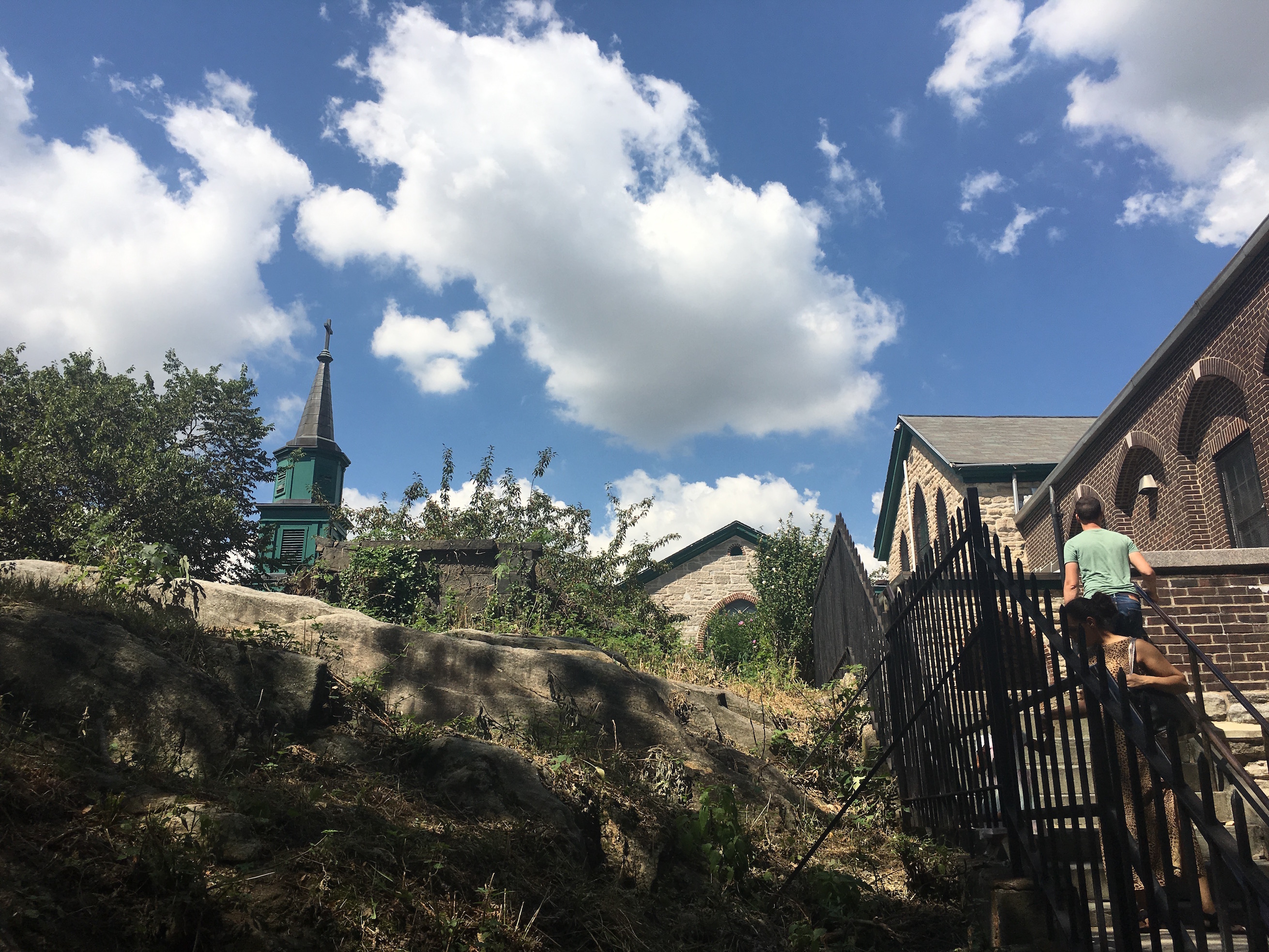

Portions of this article were taken from an earlier one that I wrote for this blog back in 2010.

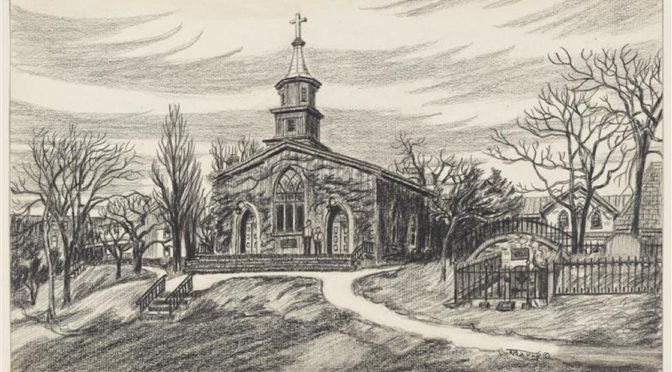
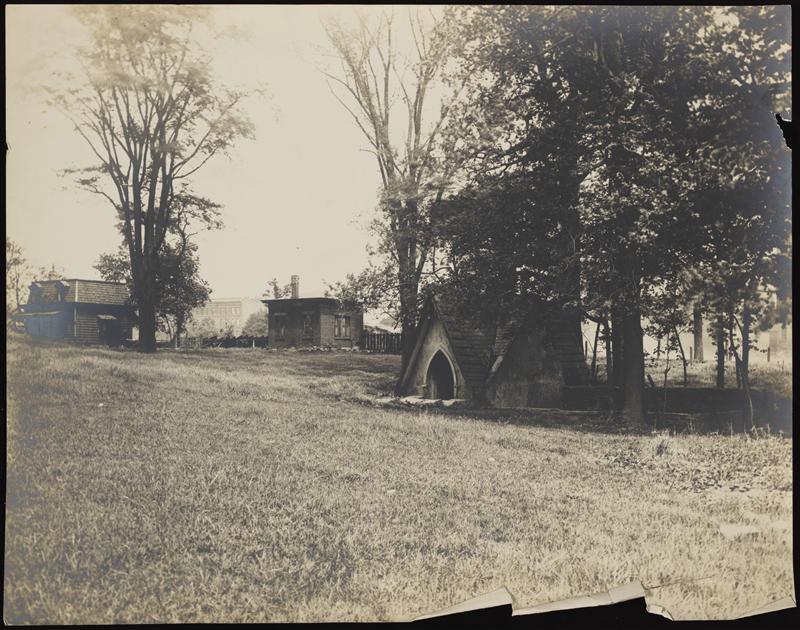
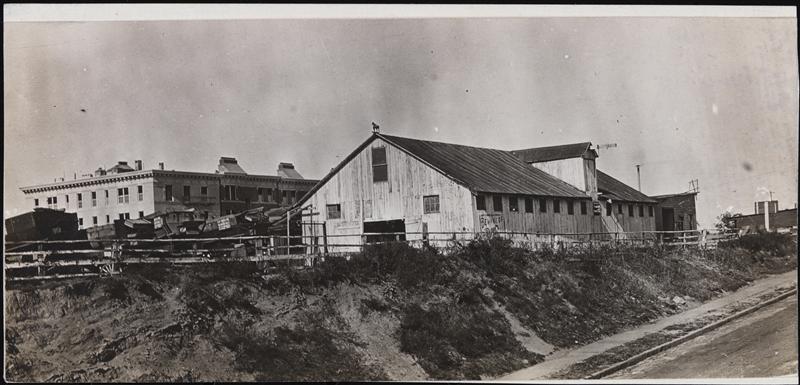
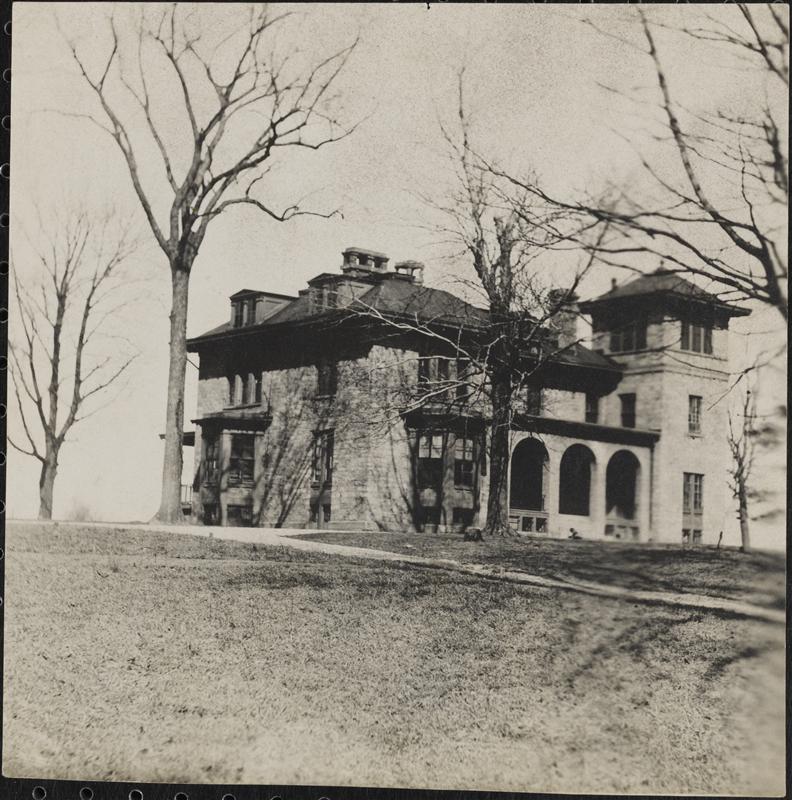
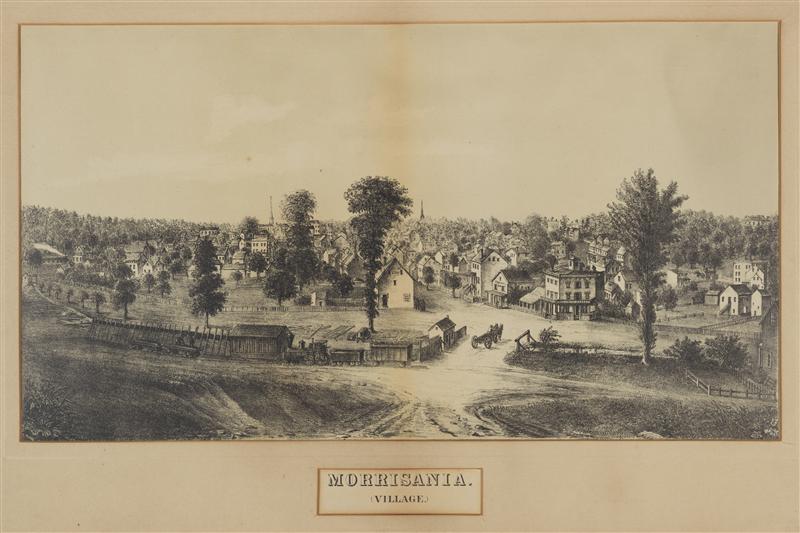
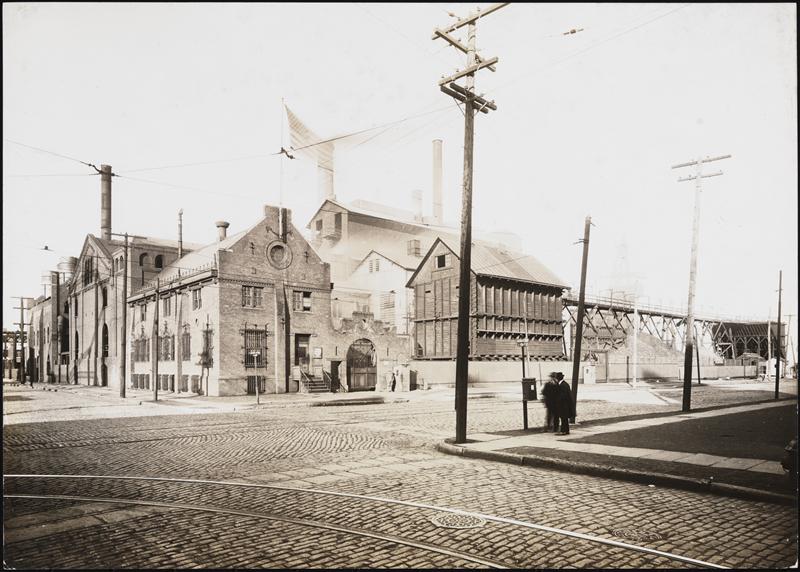
29 replies on “Morrisania: The South Bronx and the old days of American aristocracy”
As a Morris descendant, I have been to the church, and in the vaults underneath. I so wish the church, signs and vaults were restored to honor Gouverneur Morris…
Our family recently had the Bleecker vault restored under Trinity Wall St. so its possible.
Excellent point and smart suggestion !
Dear JIm:
My husbands family are direct descendants of Gouverneur Morris’ father and directly linked to GM’s sister. The family has talked about helping restore the grave of GM. Would you be willing to have our family contact you? Dee Dee Phelps
My 12th great grand father was Lewis Morris. I love reading the history and can’t wait to one day visit.
You should consider applying for membership in the DSDI! I too am a direct descendant of Lewis Morris and I received a nice little scholarship for school through the society!
He is my 11 x grandfather we must be related! Fun
I am a Morris too, related to Colonel Lewis Morris, b1601, he is my grandfather. We have some holes in our family tree around this time. I loved this article, thank you!
Great to see so many Morris descendants interested in St. Ann’s. In the 1930s St. Ann’s was to be come a National Shrine. Henry Lewis Morris and his son Lewis Spencer Morris managed the Morris “family office” at Morris & McVeigh. Even in the late 1980s the family still owned land in the Bronx and New Jersey passed down from generations before.
I’m Jim Morris, a descendant of Captain Richard Morris of Monmouthshire, Wales who fought alongside Cromwell in Ireland circa 1650 and was awarded land in Barbados for his service. Upon selling his land in Barbados, he traveled to what’s now New York and purchased the 5,000 acres of land which became Morrisania.
Jim… I am Scott Morris and I have proven my family to 1711 on Long Island and NYC, and believe to be descended of a James Morris in the 1670-1711 era before that, whom was associated with William Nicoll (son of Mathias) and other prominent figures. Could we compare notes please.
Jim,
I am related to Monmouthshire, Wales also. Would love to connect.
emorris@roelandpark.org
It is great to see the family history being documented. Much of our history has been forgotten in the family. After they moved to South Carolina a lot of records were destroyed or burnt during the Civil War. Always interesting to read something new.
Thanks for the fascinating article and historical account of Morrisania ! I am also a MORRIS direct descendant, so all the best to the cousins who have posted. Isabella ((nee MORRIS) Wilkins was my great X 6 grandmother and Lewis MORRIS, III, my great x 7 grandfather. Gouverneur MORRIS, Sr. and Lewis MORRIS, IV (half-brothers of Isabella Morris Wilkins) were my great x 6 uncles. I hope to visit St. Ann’s one day as well.
I love to read history especially the history of the Morris family in particularly about Gouverneur Morris as I was born in Gouverneur ny the only town in all of US with that name. His great grandson the 3rd was a screen writer during the silent era in Hollywood. His name was on many blockbusters of the day and can be rented on Netflix. I should have written down the titles when I watched them so now I cannot recall the titles.
Delighted with your piece on Morris’ and Morrisiana.
We in the “history community” of New Jersey find
Lewis I’s advocacy for independence from New York,
astute and independent from his English contemporaries
that served the interests of the British crown. Not all appointees
that followed took heed of his example.
Thanks.
I am not a descendant of the Morris family. However, my parents were married in the Morrisania Presbyterian Church on Washington Avenue in 1938. My mother was confirmed in the church and she and her family attended services there. Morrisania was bordered to the east by Webster Avenue where they resided.
My name is Edward “John” Morris and I am a direct relative dating back to Monmouthshire , Wales at least to 1575. My part of the Morris family owned the Piercefield House at Chepstow race course. Gov Lewis Morris is a direct relative of my family and his crest is my direct family coat of arms.
Morris County New Jersey and Morristown NJ are also direct family relations to me.
Does anyone know anything about Staats Long Morris and also about the burning of Morrisania byb the British. What date was that?
Wow! I am a. Direct descendant of the Morris family as well. This is truly amazing to see other ancestors!
I am researching Louisa Maria Morris Edwards Montgomery, daughter of one of the Lewis Morris’s. She married John Stark Edwards and moved to Warren, Ohio as one of the founding families. I would love to hear from anyone that might have information on her. In the biography if her written by her granddaughter who had letters or diaries from her, Louisa talks about returning to Morrisana to visit family.
I am researching a piece of furniture that I believe belonged to Gouverneur Morris. Can anyone direct me to any probate records for his estate. The item of furniture descended from his sister Euphemia.
My mother’s grandmother was Augusta McEvers Morris dePeyster nee Morris, daughter of William Henry Morris. Her husband Frederic J de Peyster about 1892 commissioned oil copies of portraits of Lewis 2 as this article calls him and also Lewis 4 per this article. My paperwork uses Lewis III to designate the signer and I also have a copy of the Mary Walton portrait (his first wife) copied at the same session.
The originals were all hanging in the Morrisania house at that time the copies were painted.
What stands today where Lewis Morris IV the Signer lived. I was told a while ago the site for this was a western embutment of the RFK Bridge but see here that Lewis’ house was west of “Mill Creek” so that would seem too far East for where the Bridge is. I was also told Gouvener’s (sic) was about where today’s Fed Ex packaging plant build is to the east of the RFK Bridge. It would seem both spits should be marked. Any thoughts on each location?
How wonderful is this? I have a grin ear to ear. I found some family members I didn’t know existed. I am related to the Morris’s. A shirt tail kind of thing, through the Hoffman’s of Kingston, NY. I am very interested in the contributions that Gouv. Morris made to our founding documents and how he arrived at the conclusions that he did. He is my unsung Hero to our Republic. I am currently reading his “diary and letters. At every stage of his development I am amazed.
My family is descended from Lewis Morris twice via the Rutherford and Richard Valentine Morris. My great grandfather directed the Morris family office of all the real estate that was left over from Morrisania. That entity still exists today and is perhaps the oldest business in New York. I love the idea of a Morrisania National Memorial and you all should be on the board! I have some original documents including some that highlight the plantations they owned in South Carolina. Thx. Topper Morris
On Jan 9, 1840, my 3rd Great Granduncle, Joseph Lodge entered into a lease with Gerard W. Morris, Richard V. Morris, and Henry Morris to lease farmland. The parcel was part of the late Richard V. Morris Estate. It lay between Boston Post Road on the west and Mill Brook on the east.
The property was leased for ten years, with the first year’s rent being two hundred twenty dollars, due bi-yearly. The rent increased yearly with the final sum of eight hundred forty dollars.
Joseph was born in 1799 in Uley, Gloucestershire, Wales. He first immigrated to New York in 1828. He was searching for “peace and plenty” according to a letter he penned to my 3rd GGF James Lodge in 1846. Joseph made several trips back to Bedminster, England where his wife and children lived. finally bringing them to his residence in West Farms, Winchester, New York in 1836. Joseph was a successful Farmer/Nurseryman. He participated in the annual Spade Digging competition. He and his son William were medalists in the event.
Joseph remarried in 1854. It is unknown if his wife passed away or returned to England. After his marriage, Joseph relocated to Rahway, Union, New Jersey, where he continued his life in horticulture as a Florist. He remarried. It is unknown if his wife had passed away or returned to England.
Joseph passed in 1888 in Brooklyn and was buried in Cypress Hills Cemetry.
What an enlightening tale of the Morris’ family in New York City!
I am related to the Morris’ by the second marriage in 1814 of my 3rd Great Grandmother Louisa Maria (Morris) Edwards (1787-1866) to Robert Montgomery (1773-1858) of Youngstown, Ohio, following the early death of her first husband, John S. Edwards (1777-1813). Robert was a son of General William Montgomery (1736-1816) of Chester County, NJ and Danville, PA), a Revolutionary War patriot.
Louisa Maria Morris’ father was Lewis Richard Morris (1760-1825), her mother was Mary Polly Dwight (1763-1813) and her grandmother was Mary Edwards Dwight (1734-1807), and her great grandfather was the prominent New England theologian, Jonathan Edwards (1703-1758).
Hello Sally,
I am researching your great grandmother’s story. I would love to connect with you. I am in Warren, Ohio where she came to live with her first husband.